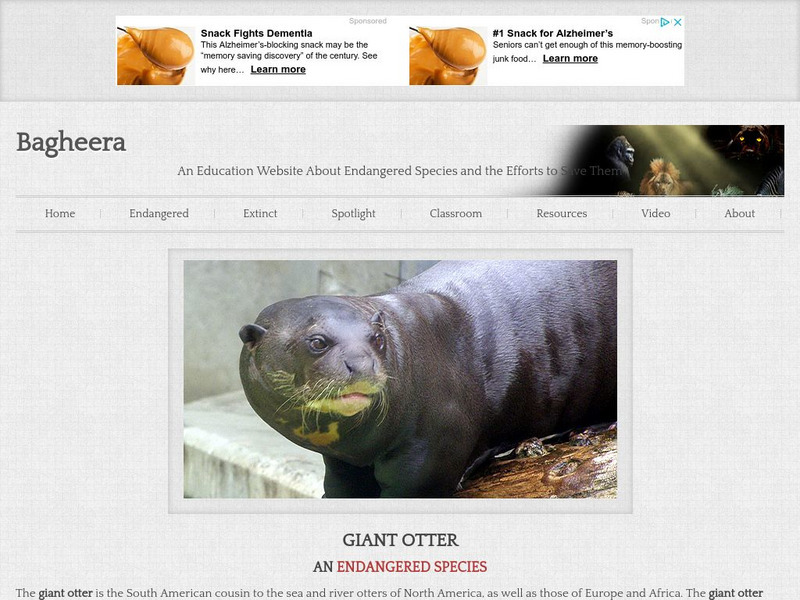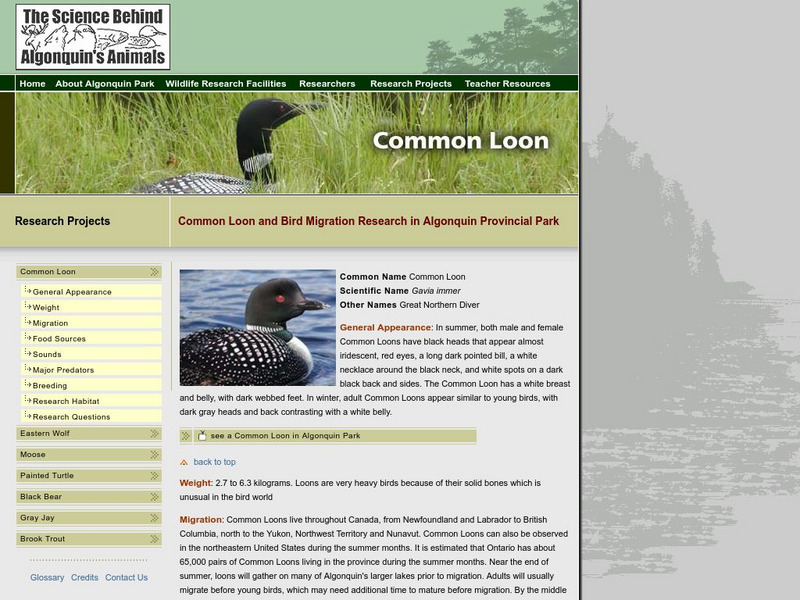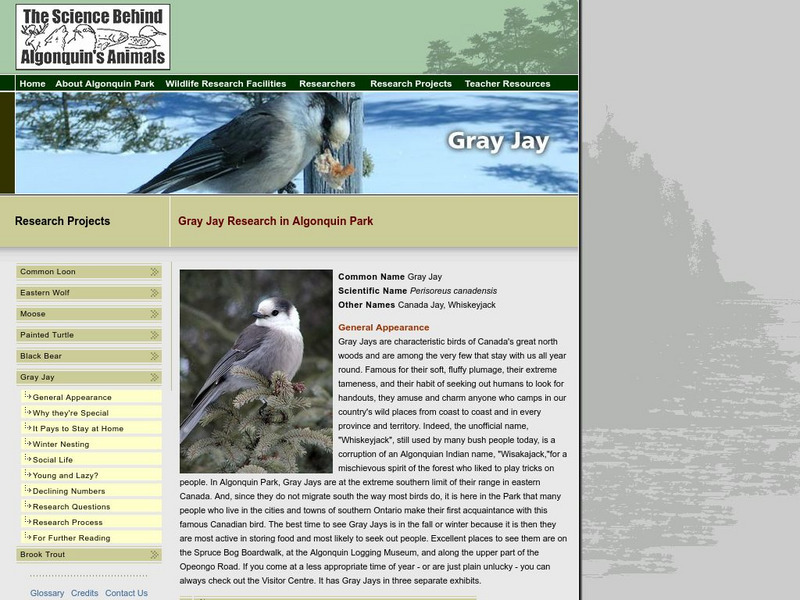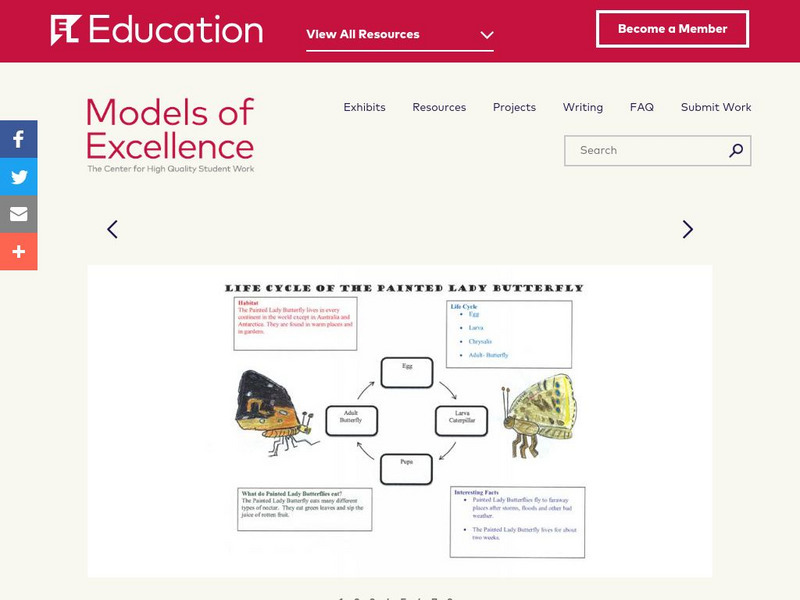Hi, what do you want to do?
Other
Appalachian Black Bears
Field Trip Earth takes you on a "field trip" to study the American Black bear. Learn about the project, the species, and its habitat. As well as exploring the project through pictures taken in the field.
Other
Field Trip Earth: Ghosts of the Southwest
Enjoy the information presented by Field Trip Earth on the Mexican Wolf. Read about the 1998 release of these wolves back into the wild. Learn about this project, the species, and its habitat.
Alabama Learning Exchange
Alex: Surviving in the World!
After learning about the survival traits of the chameleon, students will work in groups to research the survival traits of other animals on the Internet and will create a slide show using the collected information to share with the...
Other
Field Trip Earth: Takhi Recovery in the Gobi
Field Trip Earth takes a look at the Prezewalski Horse Recovery done in Mongolia's Gobi desert. This was a species of horse that was brought back from near extinction. Learn about the project, the species, and the region it inhabits....
Other
San Francisco Bay Area Wetlands Restoration Program
Homepage for the massive wetlands restoration project in San Francisco Bay. History, objectives, and benefits of the project are described.
Writing Fix
Writing Fix: Details and Vocabulary: Using Content Based Vocabulary
In this lesson, young scholars will write a descriptive paragraph regarding an animal and its habitat, or a character in a particular setting. Great cross-curricular usage of vocabulary.
US Geological Survey
Usgs Kids: Mealworm Ranch
A fun, hands-on project that will allow your students see first-hand how metamorphosis works. Students observe mealworms develop and change right before their eyes.
World Wildlife Fund for Nature
World Wildlife Fund Russia
This resource provides bilingual news and facts about wildlife issues and projects across Russia. A small collection of beautiful images and video clips. Special section for kids with puzzles and nature-related games such as Rescue the...
Cornell Lab of Ornithology
Habitat Network: Chicago Hope: Design Challenge
Design Challenge takes photos of tricky spots in people's yards and puts them out there for advice from the professionals at the Cornell Lab of Ornithology. Check out this urban landscape.
Bagheera
Bagheera: Giant Otter
This site takes a look at the physical characteristics and habitat of the giant otter. Special focus is given to why this animal is endangered, and conservation projects currently underway. Additional learning activities are also...
California State University
Cardboard Tree and Endangered Animals Lesson
Two short art lessons in one that introduce young learners to the idea of extinct animals and habitats. Each student will be creating and painting a habitat and assembling an owl. This could be adaptable to use the extinct animal of your...
Friends of Algonquin Park
Factors Limiting Population Growth of Wolves in Algonquin Park
Information is given on the Eastern Wolf's appearance, migration, food, breeding and predators. Several of the topics are highlighted with video clips. Research questions and answers examine the environmental impact on the wolves in the...
Science Buddies
Science Buddies: M&m Survival Challenge
In the wild, there are two types of animals: the hunters and the hunted. A good predator is always on the prowl for fresh prey. What can an animal do to stay off of the menu? Find out how some animals use camouflage, and why sometimes it...
Friends of Algonquin Park
Common Loon and Bird Migration Research in Algonquin Provincial Park
General information is given on the loon. See a movie of a Common Loon and listen to the different sounds that the loons are best known for. Included are research questions and answers about impact of the environment on the loon in the...
Friends of Algonquin Park
The Science Behind Algonquin's Animals: Black Bear
Known as the American Black Bear or commonly the Black Bear, information is detailed on its appearance, weight, migration patterns, food sources, major predators and breeding. This is an excellent resource for the student researcher.
Friends of Algonquin Park
The Science Behind Algonquin's Animals: Gray Jay
The Gray Jay is found in Canada's north woods and is one of the few birds that stay all year round. Learn about its appearance, why they are special, nesting, and social life along with other interesting facts.
American University
Deforestation in Madagascar
Gives history of Madagascar's cultural and economic development in relation to its land clearing practices. Cites biological species indigenous to the island, and their imminent destruction. Includes links to several case studies.
Tramline
Virtual Field Trip: Temperate Forest Biome
Travel with your students on a Virtual Field Trip to learn about Temperate Forest Biomes. You will also discover many informative and interactive websites.
Annenberg Foundation
Annenberg Learner: Journey North: Manatee
View this presentation to learn about manatees and track their migration. Includes information about manatee characteristics, life span, behavior, and migration. There is also a migration map with updated sightings.
EL Education
El Education: Bird Cards
This set of note cards was created by kindergarten students from the Anser Public Charter School in Boise, Idaho, as part of a year-long Learning Expedition on birds. Each student became a specialist in his or her specific species of...
EL Education
El Education: Field Guide to the Aquatic Gardens at Forest Park
3rd grade students in Springfield, Massachusetts created this field guide as part of a learning expedition on ecosystems and pond life. Students did fieldwork in the city park and worked with local experts, closely examining the ponds....
EL Education
El Education: The Study of Life Cycles
Students learn about various insects and use original text and illustrations to create a book including information such as habitat, life cycle, diet, behavior, predators, and other interesting facts.
Other
Tulsa Walk: Birds of Prey of Oklahoma
Choose a bird of prey from a convenient drop-down menu to find out more about its conservation status, identifying characteristics, feeding habits, habitat, and nesting behaviors. Information compiled for an eighth-grade science project...
Other
N.c. Zoological Society: Field Trip Earth: Red Wolves of Alligator River
Field Trip Earth takes a look at the once endangered red wolf and the comeback it has made since 1980. Learn about the project, this species, and its habitat through this site.
Other popular searches
- Habitat Project Shoe Box
- Animal Habitat Projects
- Habitat Project Rubrics
- Habitat Project Polar Bear
- Desert Habitat Project
- Group Habitat Project
- View Habitat Project
- Habitat Project Ocean
- Science Habitat Project
- Space Habitat Project
- Ga Habitat Project






















